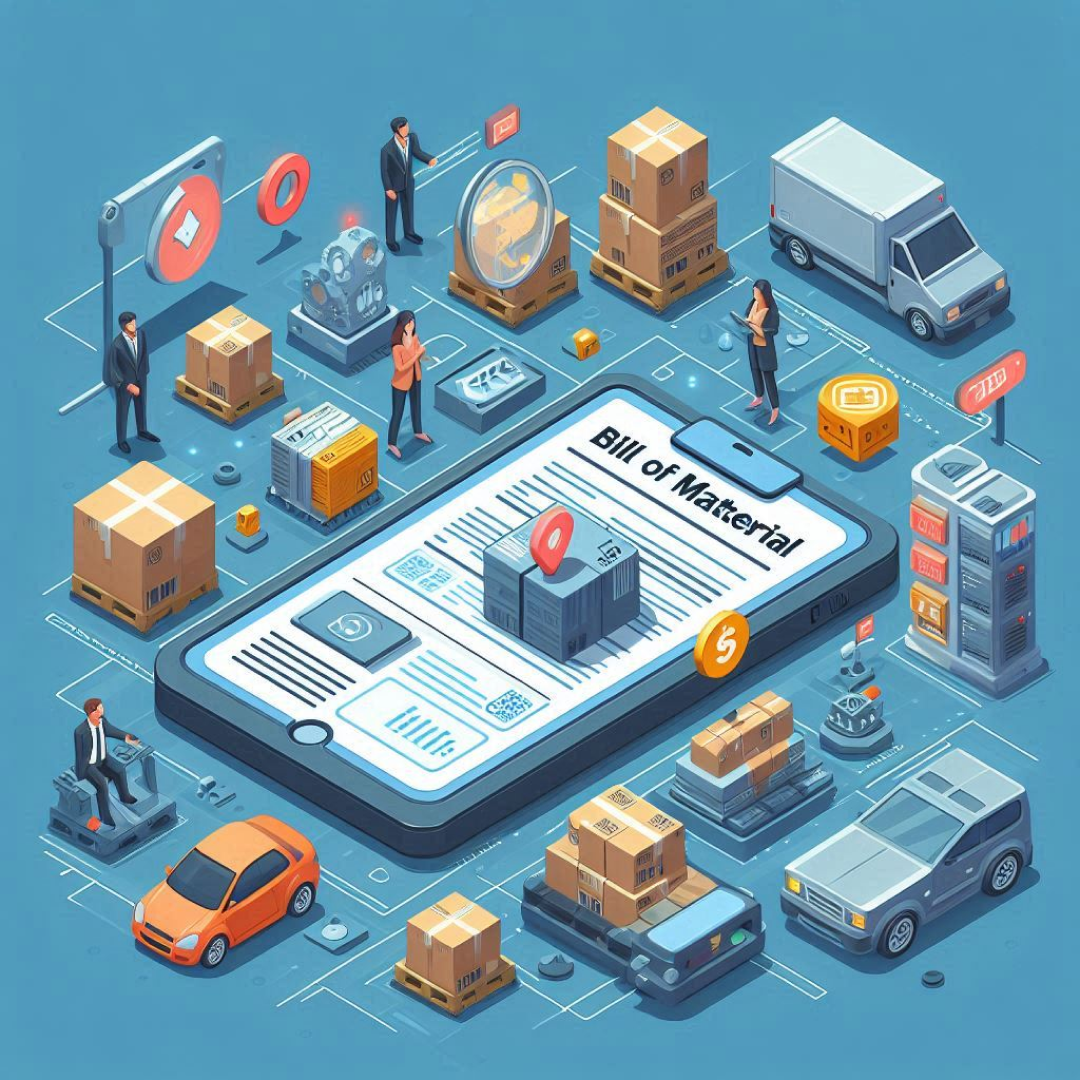AI Services in BOM Management: Revolutionizing Manufacturing
An AI service can significantly improve the Bill of Material (BOM) management process, enhancing the accuracy, efficiency, and scalability of manufacturing. The BOM is a critical document in manufacturing and production, acting as a detailed list of materials, components, and assemblies required to construct a product. By incorporating AI services, manufacturers can automate and streamline BOM management, improving production flows and supporting better decision-making.
Types of Bill of Material (BOM)
BOMs can be categorized into several types, each serving a specific purpose within the manufacturing process:
1. Engineering BOM (EBOM) : This type is created during the product design phase. It includes all components and subassemblies required to produce a product. It is typically structured according to the product’s engineering specifications.
2. Manufacturing BOM (MBOM): This BOM is tailored for the manufacturing process. It includes all components, subassemblies, and raw materials needed for production. It may also include additional information such as the sequence of assembly and manufacturing instructions.
3. Sales BOM (SBOM): Used primarily in sales and marketing, this BOM outlines the components that make up a product from a sales perspective. It is often used for configuring products that are sold as a package.
4. Service BOM: This type is used for maintenance and repair purposes. It details the parts and components required for servicing a product after it has been sold.
5. Configurable BOM: This BOM is used for products that can be customized or configured based on customer requirements. It allows for flexibility in the manufacturing process by enabling different combinations of components.
Key Components of a BOM
A Bill of Material (BOM) contains essential elements, all of which can be managed more effectively through AI services:
Part Number: A unique identifier for each component or material.
Description: A brief description of the part.
Quantity: The number of units required.
Unit of Measure: Measurement unit for the quantity.
Reference Designators: Identifiers indicating the component’s position.
Procurement Type: Whether the part is purchased, manufactured, or stocked.
Lead Time: The time required to procure or produce each component.
Importance of AI Services in BOM Management
Integrating AI services into BOM management can enhance several aspects of the manufacturing process:
Cost Estimation: AI services can analyze historical data and provide more accurate cost predictions by analyzing the required materials and components in a BOM.
Inventory Management: AI tools can predict demand patterns, helping manufacturers optimize inventory and prevent overstocking or stockouts.
Production Planning: With AI services, manufacturers can improve their production planning by optimizing the sequence of assembly and identifying potential bottlenecks before they arise
Quality Control: AI can monitor and analyze the use of materials during production, ensuring that only the correct components are used and helping to reduce defects.
Collaboration and Communication: AI-powered systems can make BOM data accessible to all departments in real time, improving cross-departmental communication and reducing errors.
Creating an Effective BOM
To create an effective BOM with AI services, manufacturers should follow these best practices:
Standardization: Use AI services to standardize formats and terminology across BOMs. AI tools can help automate this process, reducing manual effort and human error.
Detailing: AI services can help ensure that all relevant details, such as supplier information, lead times, and specifications, are accurately included in the BOM.
Version Control: AI-driven platforms can manage version control and track any changes made to the BOM, making it easy to maintain the most up-to-date information.
Integration with ERP Systems: AI services can seamlessly integrate BOM data with Enterprise Resource Planning (ERP) systems, improving inventory management, procurement, and production planning.
Regular Reviews: AI-powered tools can assist in reviewing BOMs in real-time, automatically flagging outdated or incorrect information and ensuring accuracy.
Challenges in BOM Management and How AI Services Address Them
While BOM management is essential, it comes with challenges that AI services can address:
Complexity: As products become more complex, BOMs can grow significantly. AI services can handle this complexity by analyzing large datasets, identifying patterns, and automating updates.
Change Management: Changes in product designs or components can lead to discrepancies. AI tools can automatically track and implement changes to the BOM, ensuring data integrity.
Data Integrity: Inaccurate or outdated information can cause production delays. AI services can continuously monitor BOM data for inconsistencies and ensure the information is current.
Collaboration Across Departments: AI-powered collaboration tools can break down silos between departments, ensuring that everyone is working with the latest BOM data.
Conclusion
The Bill of Material (BOM) is a critical document in manufacturing, acting as a blueprint that guides production from start to finish. It provides a detailed list of materials, components, and assemblies, playing a key role in cost estimation, inventory management, production planning, quality control, and cross-departmental collaboration. By incorporating AI services into BOM management, organizations can achieve greater efficiency, adaptability, and scalability. AI-driven solutions allow manufacturers to respond dynamically to changing requirements, optimize resource utilization, and personalize production at scale. An effective BOM requires meticulous attention to detail, standardization, and regular reviews to maintain accuracy. Despite the inherent challenges in BOM management, leveraging AI services can significantly enhance manufacturing processes, improve operational efficiency, and elevate overall product quality.
Do you like to read more educational content? Read our blogs at Cloudastra Technologies or contact us for business enquiry at Cloudastra Contact Us.
